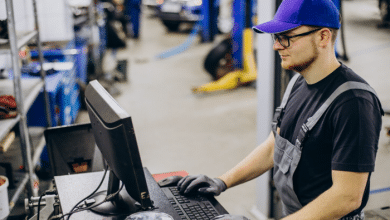
Walk into any decent bottle shop and you’ll notice something interesting. Before anyone reads tasting notes or checks ratings, they’re drawn to certain bottles. The weight of the glass, the texture of the label, even the type of closure—these details are doing heavy lifting before a single drop gets poured.
Most winemakers spend months perfecting their blend and thousands on marketing, then rush through packaging decisions at the last minute. That’s a problem. Because packaging doesn’t just protect the product. It tells customers whether they’re holding something worth the price tag.
The Psychology Behind First Impressions
Here’s what happens in those first few seconds. A customer picks up a bottle and their brain is already making judgments. Heavy glass feels premium. A quality closure suggests the winemaker cares about what happens after bottling. Cheap materials? They signal corners were cut, and if corners were cut on packaging, what about the product inside?
This isn’t about tricking anyone. It’s about alignment. When the packaging quality matches the product quality, customers feel confident in their purchase. When there’s a mismatch—great marketing but mediocre materials, or vice versa—something feels off, even if they can’t articulate why.
Where Most Wineries Get It Wrong
The biggest mistake is treating packaging as an afterthought. Production schedules get tight, budgets get squeezed, and suddenly decisions are being made based purely on whatever’s cheapest and available. But customers don’t know about your budget constraints. They just know your bottle feels lighter than the one next to it, or that the closure looks questionable.
Another common problem is inconsistency. Using premium bottles for the reserve line but bottom-tier closures across the board sends mixed messages. Every component needs to support the same story about who you are as a producer.
The Closure Question Nobody Wants to Talk About
Let’s address the elephant in the room. Closure choice matters more than most producers want to admit. The seal on a bottle is one of the first things a customer interacts with, and it’s definitely one of the last things they see before opening. Screw caps work great for certain styles, but for traditional wines meant to age, natural closures still communicate quality in a way that alternatives don’t.
The problem is that not all closures are created equal, and the quality range is wider than most people realize. Lower-grade options might save a few cents per bottle, but they come with higher failure rates and inconsistent performance. When producers are sourcing materials, especially wine corks for sale, the grade and quality standards make a real difference in how the product ages and how customers perceive the overall package.
The Bottle Weight Dilemma
Heavier bottles cost more to produce and ship. That’s just math. But they also feel more substantial, more premium. The challenge is finding the sweet spot where the bottle weight matches your price point and brand positioning without eating your entire margin in glass and freight costs.
Some producers have started being more transparent about this trade-off, choosing lighter bottles for environmental reasons and educating customers about that choice. That works when it’s intentional and communicated. What doesn’t work is a thin bottle on a $40 wine with no explanation—customers just assume you’re cutting costs.
Labels That Actually Work
Great label design gets attention, but it needs to do more than look pretty. The material choice matters just as much as the graphics. A beautifully designed label on cheap paper stock that starts peeling in an ice bucket isn’t doing anyone favors. Wine-friendly materials that can handle condensation, temperature changes, and rough handling show you’ve thought through the actual user experience.
Texture adds another dimension too. Embossing, specialty papers, or even simple uncoated stocks can make a label more memorable without adding much cost. The goal is creating something that people want to keep, not because you told them to but because it feels substantial enough to be worth saving.
When Premium Materials Actually Pay Off
Spending more on packaging isn’t always the answer, but there are situations where it absolutely makes sense. For wines meant to age, quality closures aren’t optional—they’re insurance. For limited releases or reserve bottlings, premium materials help justify premium pricing. For wines targeting gift-givers, presentation details can be the deciding factor at point of sale.
The return on investment shows up in different ways. Sometimes it’s direct—customers willing to pay more for a product that feels more valuable. Sometimes it’s indirect—fewer returns, better shelf presence, stronger word-of-mouth. But it’s rare to see a producer regret upgrading their packaging materials when it’s done strategically.
The Sustainability Angle
More customers care about environmental impact now, and packaging is an obvious place where values become visible. Lighter bottles, recycled materials, and reduced packaging all resonate with certain buyers. But greenwashing is real, and customers are getting better at spotting it.
The key is making sustainability choices that don’t compromise quality perception. A lighter bottle is great if you can explain why you chose it. A cheaper closure marketed as “eco-friendly” when it’s really just cost-cutting won’t fool anyone for long. Authenticity matters here more than anywhere else.
What This Actually Means for Your Brand
Every packaging choice is a brand choice, whether it’s treated that way or not. The materials say something about priorities, attention to detail, and respect for the customer. Premium materials suggest confidence in the product. Budget materials suggest price is the main selling point. Mixed signals suggest confusion about what the brand actually stands for.
The good news is that fixing packaging doesn’t require a complete overhaul. Small upgrades—better closures, heavier labels, more consistent glass—can shift perception without destroying margins. The point is being intentional about these decisions instead of defaulting to whatever’s convenient.
Building Long-Term Value
Strong brands are built on consistency. That means the packaging needs to deliver the same message, year after year, bottle after bottle. When customers know they can trust not just the product but the entire experience—from how the bottle feels in hand to how cleanly the closure removes—they stop shopping around. They become repeat buyers.
That trust starts with materials that match the promises being made. No amount of marketing can fix the disappointment of cheap packaging on an expensive product. But quality materials on a fairly priced product? That’s how loyalty gets built, one bottle at a time.





